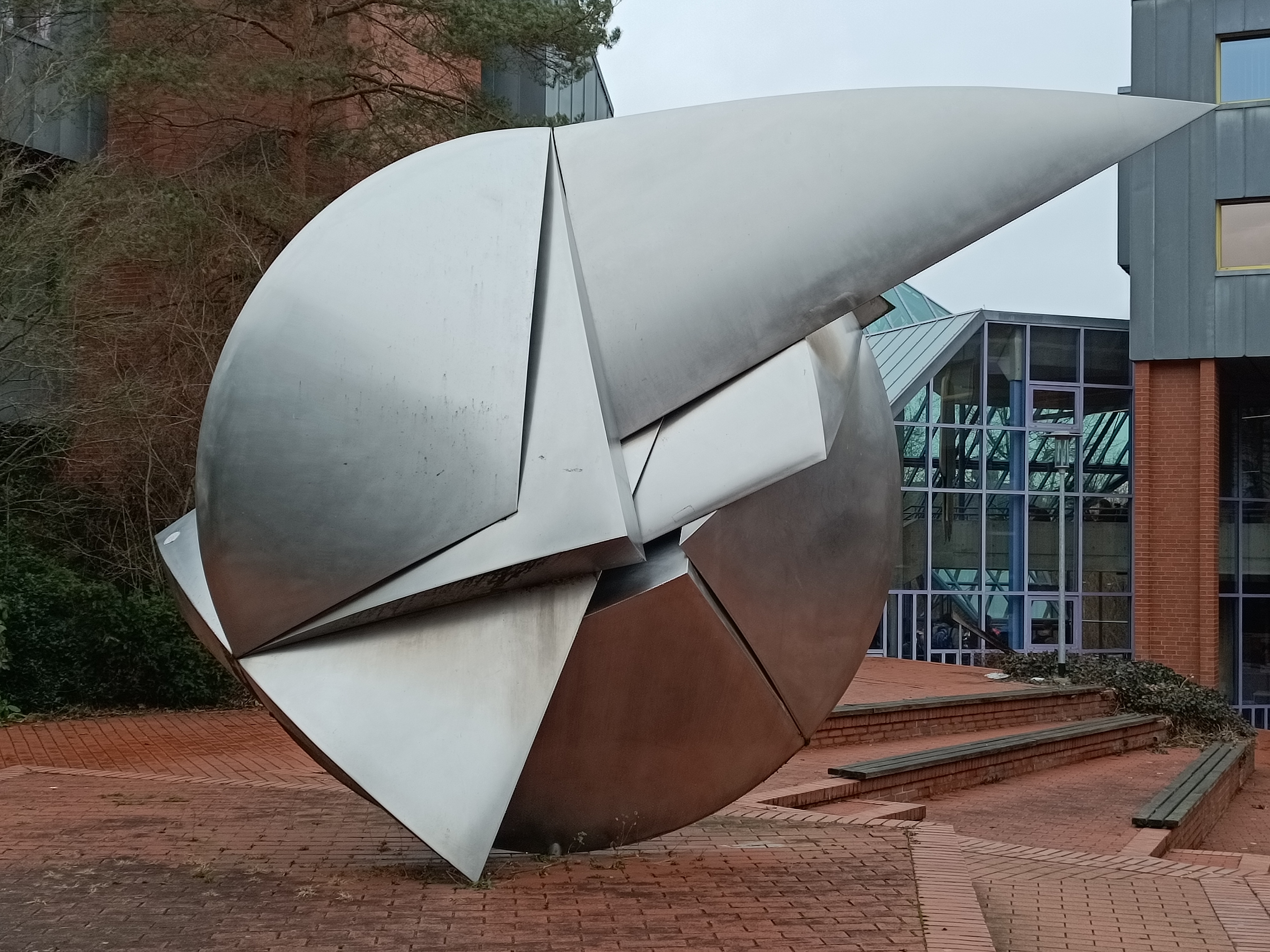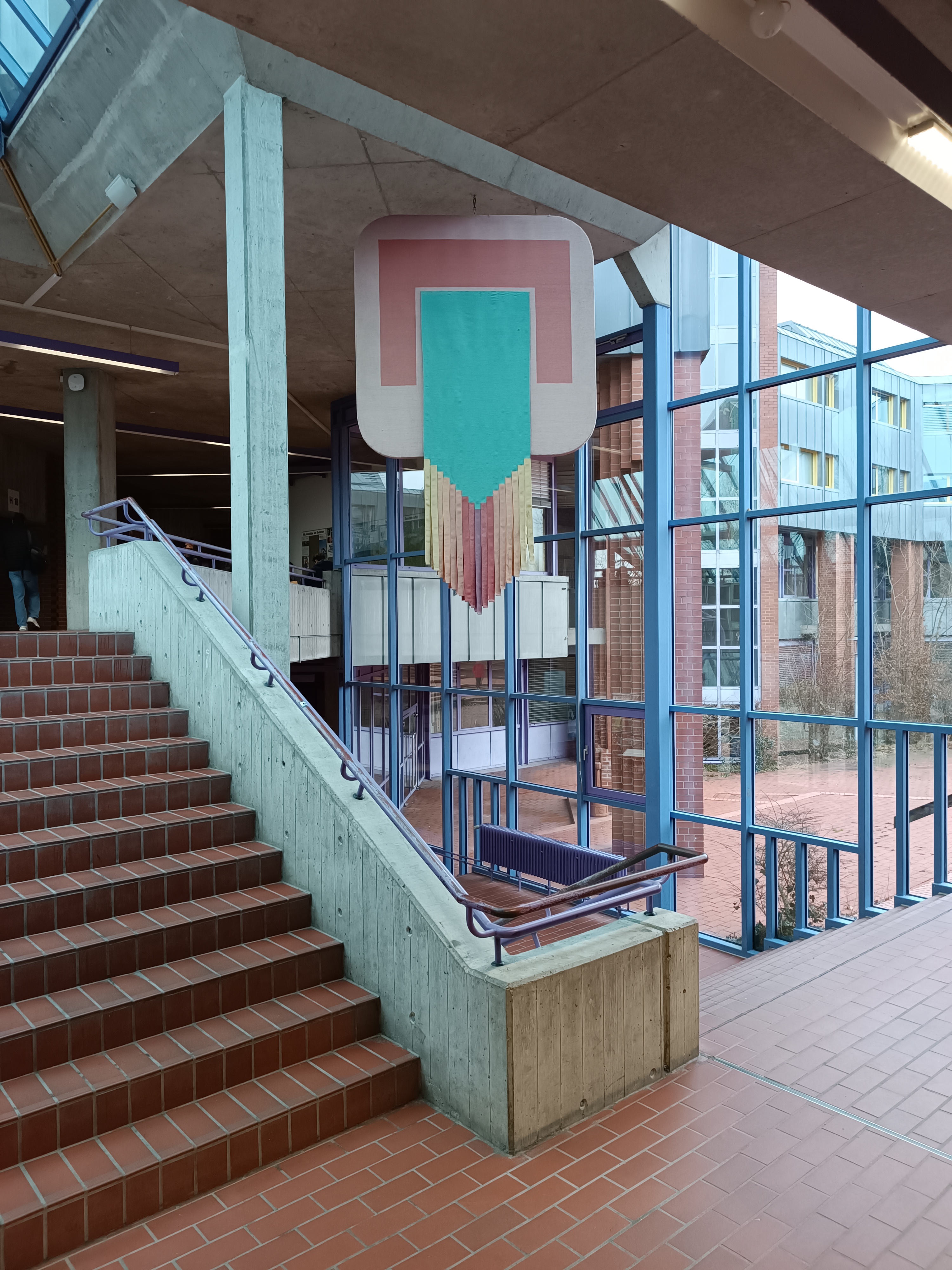Natural Sciences II

The sculpture by Erich Hauser at the University of Bayreuth bears his characteristic artistic signature. The sculpture, made of polished stainless steel sheet, features a sliced, ascending disc that dynamically dominates the courtyard of the Naturwissenschaften II building. This work is not only an aesthetic art piece but also a symbol of Hauser's artistic and personal development.
Stainless Steel: Hauser chose stainless steel as the primary material, notable for its robustness and reflective qualities. The polished surface mirrors the surroundings, creating an interactive relationship between the sculpture and the viewer.
Dynamics: The ascending form of the disc imbues the sculpture with a strong sense of movement and energy. It appears to rise from the brick-paved ground, possibly symbolizing growth, development, or the aspiration for higher goals.
The sculpture is positioned to be the focal point of the courtyard. It engages in a dialogue with the surrounding architectural elements and the fountain, harmoniously and simultaneously creating a sense of tension in the space.
The courtyard, serving as a meeting point for students, underscores the social function of art: it serves not only for aesthetic contemplation but also as a place for encounters and exchange.
The sliced disc could be interpreted as a metaphor for breaking boundaries or opening new perspectives. This fits well within the context of a university dedicated to expanding knowledge and horizons. The shiny surface reflects light and its surroundings, placing the sculpture in constant change and interaction with its environment—a symbol of the dynamics of learning and research.
Erich Hauser, who came from humble beginnings and largely taught himself his artistic skills, reflects his own life story in this sculpture. His career, marked by hard work and relentless pursuit of artistic perfection, is expressed in the ascending form of the sculpture.

The "woven textile object" by Georg-Karl Pfahler, installed at the University of Bayreuth in 1984/1985, is a remarkable example of the integration of art into public spaces. This work, created in collaboration with the Franconian Gobelin Manufactory Marktredwitz under the direction of Ursula Benker-Schirmer, combines Pfahler's distinctive style with the traditional art of Gobelin weaving.
Georg-Karl Pfahler, born in 1926 in Emetzheim, was a significant representative of abstract art in Germany. His artistic development began at the Academy of Fine Arts in Nuremberg and continued at the State Academy of Fine Arts in Stuttgart, where he was influenced by, among others, Willi Baumeister. Pfahler's work is characterized by a clear, geometric formal language and an intense engagement with color and space.
The textile object in Bayreuth is an outstanding example of Pfahler's later works, in which he became increasingly interested in the interaction between artwork and space. The object, suspended from the ceiling of the foyer in the Naturwissenschaften II building, consists of woven color fields that stand in sharp contrast to each other. The use of steel cables for suspension emphasizes the spatial dimension of the work and lends it a certain lightness and transparency.
The collaboration with the Franconian Gobelin Manufactory allowed Pfahler's designs to be translated into a textile medium that unites both the craft tradition of Gobelin weaving and the modern aesthetics of his art. The manufactory, led by Ursula Benker-Schirmer, was known for its collaborations with renowned artists and the realization of their designs into high-quality textile artworks.
Pfahler's textile object can be seen as a continuation of his earlier work in the field of Hard Edge painting. The clear, geometric forms and intense coloration are characteristic of his style. At the same time, the work expands traditional painting into a spatial dimension by projecting the color fields into the space, thus enabling interaction with the viewer.
The placement of the object in the foyer of a natural sciences building could also be interpreted as a bridge between art and science. The precise, geometric formal language and clear structure of the work reflect the scientific approach, while the artistic execution and craftsmanship of the Gobelin emphasize the creative and aesthetic dimension.
